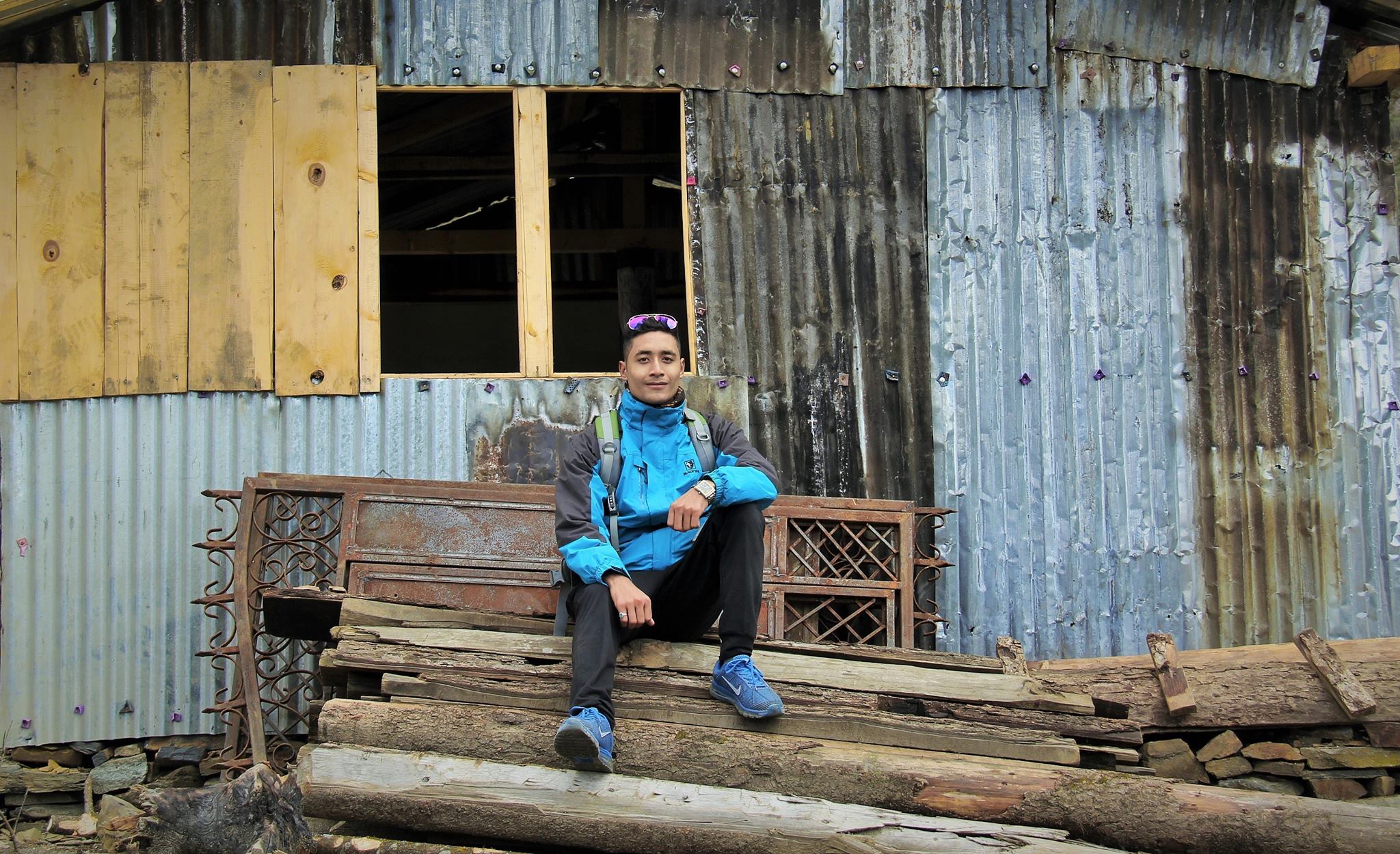Will you go back to office if the lockdown is eased?
APEX continues its dialogue with members of the general public to get a sense of how the Covid-19 lockdown is changing their lives. This week, we talk to nine working professionals to find out how they are adapting in their work.
Unaware people grave risk
Ashika Maleku Shrestha, 32 
Quality Assurance Officer, HLE Nepal
I see many people are still unaware about Covid-19 and are not following preventive measures. Thus I will prefer to work from home even if the lockdown is lifted. If I must go to the office, I would make changes such as using online logs instead of thumb logs, ordering online, keeping social distance among colleagues, and using sanitizer or hand wash from time to time.
Not meeting, calling
Pankaj Gyawali, 29 
Banker, NIC ASIA
Though the whole country is under lockdown, as a banking professional, I need to go to my office regularly. But things are not the same anymore. Interaction with customers and other staffers rarely happens now. All conversations are done via the phone. I used to visit branch offices to learn about what they were doing, or if they needed support. Now I make phone calls and suggest they maintain social distance. Even if the lockdown is lifted, there will be significant changes in how we work and provide banking services.
Internet the way out
Mamata Manandhar, 36

Assistant Manager, ACE Institute of Management
Even if my office opens right away, I would still prefer working from home until the corona crisis is completely over. I work in administration. That means I have to work closely with both students and other faculties, which in turn puts my health at risk. As all students and associates have internet at home, there would be no difficulty in conducting classes or in regular work. However, if I have to go to office, I would try to maintain social distance and take other precautions.
Hunger deadlier than virus
Hari Prasad Gautam, 45 
Teacher, Swarnim School
I have to go to work if the school opens. Most people in Nepal cannot survive without work. Hunger will kill more people than the virus. The decisions of my family members, school administration, students and their guardians determine what I do. However, even if I go to work, I would take preventive measures such as maintaining social distance, using masks and hand sanitizers, and taking along homemade tiffin.
Going only when necessary
Sneha Tamrakar, 23 
Communication and Documentation Officer, YUWA
If I have to go to work, I’d be careful about distancing between coworkers, hand washing, food sources, and contact. I would prefer online meetings to physical ones. I would work from home and maybe go to office only when necessary. One thing the lockdown has taught us is that a lot of our work can be done from home.
Restructuring work
Jahn Shrestha, 31 
Data Analyst, Dibyajyoti Groups
I would rather stay and work from home, as my work is not hampered that way. Companies should learn from this crisis that work should be project-based. They should change their HR policies and try innovative ways. Working from home is beneficial for the office as well, as it reduces the burden on them to manage resources. I work in a closed group, which involves a lot of human interaction. If I have go to the office, I will try to restructure my work.
Honing my skills
Abhisekh Shakya, 23 
Chef
In this lockdown, I am home making various dishes and honing my culinary skills. But I have to go back to work after the lockdown. As I am in the hospitality sector, my job is service-oriented. This exposes me to many people. However, due to the pandemic, I must be cautious as this virus spreads quickly. Therefore I will take necessary precautions.
Avoiding public vehicles
Anish Shakha, 24 
Sports Photographer
My work is out on the field, and I have to be back on the field when the lockdown is lifted. But I will avoid crowded areas. I will take preventive measures before going out, and I will ride my own bike instead of using a public vehicle. I will also make sure I use disposable gloves and masks. Another important thing, every time I get home from work, I will wash my hands and face. Each time, I will also clean my camera and its accessories.
Productive even during crisis
Radha Shakya, 33 
Senior Loan Assistant, Shree Laligurans Multipurpose Co-operative Ltd
I’ve been going to office even during the lockdown. I am taking various precautionary measures at work such as wearing masks, washing hands frequently, and using sanitizers. I also maintain social distance with other staffers. I’m glad that even at a time of crisis like this I can work and be productive.
Is staying home as hard as going to war?
Last week as Europe commemorated VE Day (Victory in Europe, the end of WWII) there were comparisons made between then and now. The one we have all read being: parents and grandparents were asked to go to war to save the country, whereas we are asked to stay at home to achieve the same.
This has turned my mind back to the days of the conflict in Nepal and how folks coped everyday. I spent the first half of the conflict years in Bardia. I first met Maoists while on a shopping trip to Nepalganj in 1998. At that time they were posing as police and collecting money, supposedly for police widows and orphans. I saw them again a few days later when they came door-to-door for collections and revealed who they were. I know tourist groups rafting the Karnali also came into contact with Maoists and no doubt had to make a donation also. But really, at that point, the conflict didn’t interfere with day-to-day life in Bardia too much.
I moved to Kathmandu in 2000 and fell into a crowd of folk well known in their fields and who knew much more about what was happening in the hinterland than I did. And so I personally became more aware, but still there was little impact in Kathmandu. The June 1 massacre was the turning point for many. It was after then that Kathmandu saw curfews and more tension. I remember in those days I had an old-fashioned large black umbrella and was conscious walking past army checkpoints that they might mistake it for a rifle!
But overall, those of us in Kathmandu took everything in our stride. Curfew? No problem. Long load-shedding? No problem. Maoists bussing in cadets from outside the Valley? An interesting turn of events, but no problem. Yes, things were tense but we didn’t complain too much. In those days we did not have Facebook or other social media. We had Nepal Television and Nepal Radio!
News travelled more slowly, or not at all. We just kind of got on with it, yet were aware that when we opened the newspaper there would be news of battles and death between the two sides in the conflict.
So why is it so hard for us to stay at home during this pandemic? Is it because the virus is something we cannot see? But then we in Kathmandu did not see fighting in the streets during the conflict years. Is it because we have access to news and reports and feel ‘this doesn’t apply to me’? Or is it that life has changed so much in the past 15 years that we are no longer as connected as we once were to a more fundamental way of life?
The modern fast-paced life came late to Kathmandu. The advent of cable television and widely available internet have shown just how far behind we were to some other countries. City folks have stepped away from their agricultural past, wanting something more financially fulfilling. I saw a similar phenomena in Singapore. I lived there less than 30 years after its founding and those in their 20s and 30s wanted to put any connection with their parents’ or grandparents’ kampong (village) as far from them as possible. Has that happened in Kathmandu? Do we now want to forget our roots and concentrate on building higher apartment blocks, glamorous nightclubs, more luxurious hotels, etc? And at what price? We saw how during this lockdown air pollution reduced and the mountains rose again.
While other countries are making plans for coming out of the lockdown to include a more environment friendly approach to city life, we saw what happened on Day One of a reduced lockdown in Kathmandu! Are our memories that short? Are we no longer able to take any hardship? Not going to war but simply having to stay home—has this now become a major suffering for us?
Please note I am not talking about daily wage earners here, who are subject to extreme hardship at the moment. I’m talking about us sitting in our comfortable homes, ordering food and drinks online and bitterly complaining that this is going on ‘too long’. WWII went on for six years, the conflict in Nepal for 10. Surely we can manage a month or three at home. Then build business and towns back up. With priority to the environment and social equity.
Organic products during Nepal lockdown
Two weeks into the lockdown I was looking around for a reliable produce delivery service. Sure, one of the larger supermarket chains was delivering but judging by the comments I read online, it was pretty hard to get a delivery slot with them. And this was before some of the other chains started their delivery programs. I stumbled across Kathmandu Organics by accident but when I asked around, a few friends said they had used them pre-lockdown and found them pretty good. Sorted!
So far I have had three deliveries of organic vegetables, fruits, and some other hard-to-get things such as flaxseed oil, Moringa powder, chuk amilo, and real strawberry jam. More recently Kathmandu Organics have gone into cooperation with Bro Bakery so have added croissants and multigrain bread to their product list. And did I mention they also sell Himalayan cow and yak cheese? And of course a great selection of rice, pulses, seeds and nuts from around the country. So impressed have I been with their organic-based product list and quick services I decided to find out a bit more.
Kathmandu Organics was established by Bhuwan and Nisha KC in early 2017 as a trendsetting online food store. Providing a marketplace for local, organic, and handmade products from Nepal, they collaborate with cooperatives, farmers, and entrepreneurs in 30 districts to create a sustainable value-change for their products. So successful is their online store that in February 2020 they opened a shop in front of the Police Headquarters in Naxal.
Naturally, when lockdown came into force Kathmandu Organics was well placed with its online system to start delivering. “We stared delivering from the third day of the lockdown,” says Bhuwan, “but it wasn’t easy.” Between the opening of their shop in February and the lockdown they were selling fresh vegetables on a trial basis. With the lockdown came unprecedented demand for these fresh, organic veggies. “Lockdown has been a learning curve. Perishable items were new for us but now we understand these items and our preparation system is much better than it was a few weeks ago,” says Bhuwan. New items added since the lockdown have been bakery items, and herbs and plants. And the list keeps growing.
What I like most are the apples from different mountain districts, always a bit tricky to get at the best of times. Beetroot and carrots are another favorite of mine! Along with their range of dried items—dal, rice, pulses, millet etc, there is Himalayan pink salt, different types of honey, including Cliff Honey (which they also export to Dubai), homemade achaars, ghee, Rainbow Trout, free range (frozen) chicken, and the basic vegetables such as tomatoes, cabbage, onions, and so on.
You just have to take a look at their list of products! Naturally the list changes week by week since it is now harder to get products from further afield, but they also work with farmers around the Kathmandu Valley, so there is always something fresh in stock. I asked what was the most popular item and was told Ilam cow ghee, which is from their own dairy in Illam. Also very popular, particularly at the moment, is homemade frozen momos made from atta flour with a special recipe of Nepali spice.
Do remember that organic fruit and vegetables may not have the glossy, symmetrical appearance of non-organic produce. But neither do they have the chemicals that keep those apples rosy looking for weeks. In actual fact, now in supermarkets in the UK they offer a range of ‘wonky’ fruit and vegetables. These fruits and veggies are normally tossed aside because they don’t conform to our standards of beauty. The ‘wonky’ (and yes they are given that name) produce looks exactly as fruit and vegetables looked when I was young, and how it looks coming from Nepali farms. And if you find an insect or two in your Nepali produce, its proof it really is organic.
Visit the Kathmandu Organic website at https://www.kathmanduorganics.com/ to see what is available. For prompt services, order on Messenger. Deliveries 24 to 48 hours later.
How people are planning for future lockdowns
The Covid-19 lockdown has affected people from all walks of lives. And by the looks of things, lockdowns are set to continue, in one form or the other. APEX talked to different folks on how they plan to spend their time during the extended lockdown.
Start farming
Dipak Bhattarai, 33, taxi driver
Like others, I have been compelled to think about sustaining my family amid the crisis. If this continues for some time, I am going to quit driving and start modern vegetable farming, and animal husbandry. I can use my taxi to transport the produce. I am sure agriculture will survive even if other occupations fail.
Watch sports
Bibek Kumar Yadav, 19, medical student
I am currently pursuing my MBBS. I have to spend a lot of time on my studies. I don’t think that will change even during the lockdown. But I also have a hobby of watching sports on TV. I think if the crisis continues, I will spend most of my leisure time watching sports, and with my mobile phone. Even in a crisis, I like to stay connected with my friends.
Listen to good music
Dikshya Bista, 24, receptionist
As I work with a TV channel, I have to go to my workplace even during the lockdown. I go to office everyday. I figure the lockdown won’t change my lifestyle and routines much. However, I am practicing social distancing and taking other precautions while at work. Whenever I get a bit of free time, I play some good music.
Get a new job?
Mukesh Raj Ranjitkar, 48, businessman
I run a printing press. Right now, there is no business aside from urgent work. I can’t immediately switch to other businesses even if the lockdown continues. But, if it goes long, and survival gets difficult, I will consider taking up something else, where I can use my expertise. I think it is about time we stopped discriminating between big and small works.
Take care of the needy
Jeshika Basnet, 18, student
I intend to take online classes and learn new stuff as I think it is a suitable time for that. To begin with, I must stay safe and have positive attitude. There are many poor people as well as animals out there that are suffering. If the lockdown continues, I will help them to the best of my ability. For example, I can give them food.
Write a novel
Shantiraj Rai, 26, journalist
As I am working in the media, it is my duty to update myself as well as others. I have reduced the number of people I meet. But I need to go to the field for work despite the lockdown. If it continues, I will continue my work and read self-motivation books. In that case, I am also planning to write a novel.
Try making new dishes
Sudip Poudel, 27, finance executive
Life won’t be normal if the lockdown continues. I don’t need to go to work and life is loaded with free time. I am a foodie and fond of cooking. I will try new dishes like whole fish grilled and different chicken items. I also feel happy spending time with my family.
Pick up a book
Sangita Basnet, 20, cashier
I work in a finance company that is open even during the lockdown. So, I have a normal routine. But I am concerned about my studies. If the lockdown continues, I am planning to read all course books myself. Whenever I feel bored, I will pick up a book.
Deep into literature
Rupak Adikari, 29, writer
If the crisis continues, I will be working on my next novel. Currently, I motivate myself by listening to the Bhagavad Gita. I am looking for gifts to give to admirers of literature. While I take care of my health and my family, I will also be doing more literary stuff.
Watch Korean movies
Rakshya Baral, 25, accountant
I am helping out in our factory that bottles drinking water. I take care of the accounts and other office-works. As we are not shut, I will proceed with my routine job if the lockdown continues. Most of my leisure time is spent on TikTok. I will watch as many Korean movie series as I can. I am not a bibliophile, so reading is not an option.



_20200528135853.jpg)















